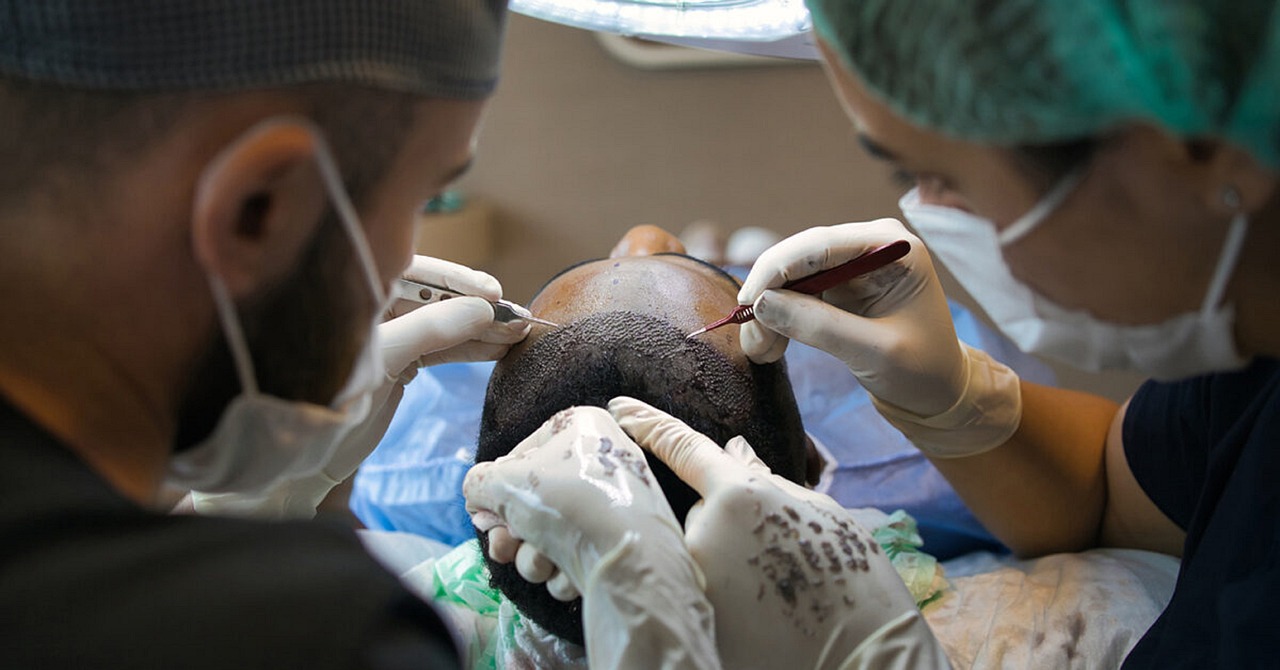Hair loss can be a difficult thing to deal with, and many people are looking for ways to restore their hair. One of the most popular options is a hair transplant, which can help restore a full head of hair. However, there are some things to consider before getting a hair transplant. In this blog, we’ll cover the top 10 things to consider before getting a hair transplant.
Introduction
Hair loss can be a difficult thing to deal with. It can cause embarrassment and low self-esteem, and it can be a source of stress and anxiety. For many people, the thought of having a full head of hair again is a dream come true. But before you make the decision to go through with a hair transplant, there are some things you should consider.
A hair transplant is a surgical procedure that involves taking hair follicles from areas of the scalp where there is still hair, and transplanting them to areas that are bald or thinning. It is a safe and effective way to restore a full head of hair, but it is important to be aware of all the potential risks and complications.
In this blog, we’ll cover the top 10 things you should consider before getting a hair transplant. We’ll cover topics such as determining if you are a good candidate for a hair transplant, the cost of the procedure, the different types of hair transplant procedures, the risks involved, and more.
What is a Hair Transplant?
A hair transplant is a surgical procedure that involves taking hair follicles from areas of the scalp where there is still hair, and transplanting them to areas that are bald or thinning. The procedure is usually done under local anesthesia, and it typically takes several hours to complete.
The hair follicles are taken from the donor area, which is typically the back of the head or the sides. The hair follicles are then transplanted to the recipient area, which is typically the top of the head or the crown.
The goal of the procedure is to restore a full head of hair. The results of a hair transplant are usually natural-looking and permanent, but it’s important to note that the procedure is not suitable for everyone.
1. Determining if you are a Good Candidate for a Hair Transplant
Before you decide to get a hair transplant, it’s important to determine if you are a good candidate for the procedure. Factors that may influence your suitability for a hair transplant include the type and extent of your hair loss, your age, and your overall health.
If you are in generally good health and the hair loss is limited to certain areas, then you may be a suitable candidate for a hair transplant. However, if your hair loss is extensive or if you have certain medical conditions, then a hair transplant may not be the best option for you.
It is important to talk to a qualified hair transplant specialist, such as a dermatologist or plastic surgeon, to determine if you are a suitable candidate for a hair transplant. They will be able to assess your hair loss and advise you on the best course of action.
2. Consider the Cost of the Procedure
Hair transplants can be expensive, and the cost can vary depending on the extent of the procedure and the location of the clinic. Generally speaking, the cost of a hair transplant can range from a few thousand dollars to tens of thousands of dollars.
It is important to do some research and compare prices between different clinics. You should also consider the cost of follow-up visits, which may be required after the procedure.
Before you decide to go through with a hair transplant, it is important to consider the cost and make sure that you can afford it.
3. Research the Different Types of Hair Transplant Procedures
There are several methods for transplanting hair, including follicular unit transplant (FUT), follicular unit extraction (FUE), and scalp micro pigmentation (SMP). Each of these methods has its own advantages and disadvantages, so it is important to do some research and decide which method is best for you.
FUT is the most common method of hair transplantation. It involves taking a strip of skin from the scalp, which contains hair follicles, and transplanting it to the recipient area. FUE involves taking individual hair follicles from the donor area and transplanting them to the recipient area. SMP involves using small needles to implant pigment into the scalp to create a natural-looking hairline.
It is important to talk to your doctor about the different types of hair transplant procedures, so you can make an informed decision.
4. Understand the Risks Involved
As with any surgical procedure, there are risks involved with a hair transplant. These risks include infection, scarring, and changes in the color and texture of the hair.
It is important to understand the risks involved with a hair transplant before you decide to go through with the procedure. Your doctor should be able to discuss the risks with you in detail, so you can make an informed decision.
5. Research the Different Hair Transplant Clinics
When choosing a hair transplant clinic, it is important to do some research and compare the different clinics. Look for clinics that have experience and a good reputation.
You should also look for clinics that are certified and accredited by a medical board. This will ensure that the clinic is following the proper safety protocols and that the doctors are properly trained and qualified.
It is also important to read reviews and talk to other people who have had hair transplants. This will help you determine which clinic is best for you.
6. Prepare for the Hair Transplant Procedure
Before you get a hair transplant, it is important to prepare for the procedure. Your doctor will likely give you some pre-operative instructions, such as quitting smoking and avoiding certain medications and supplements.
It is also important to talk to your doctor about any medical conditions you may have, such as diabetes or heart disease. This will help your doctor determine if you are a suitable candidate for a hair transplant.
You should also talk to your doctor about any allergies or sensitivities you may have, so your doctor can adjust the procedure accordingly.
7. Understand the Recovery Process
After the procedure, it is important to understand the recovery process. Your doctor will likely give you some post-operative instructions, such as taking medications, avoiding certain activities, and avoiding direct sunlight.
Your doctor will also likely recommend that you wear a hat or scarf to cover your scalp while it is healing. This will help protect your scalp from the sun and other environmental elements.
It is important to follow the post-operative instructions provided by your doctor, as this will help ensure a successful recovery.
8. Consider the potential risks and complications.
Hair transplants are generally safe, but there are some potential risks and complications. These include infection, scarring, and changes in the color and texture of the hair.
It is important to talk to your doctor about the potential risks and complications, so you can make an informed decision. Your doctor should be able to discuss the risks and complications in detail.
9. Understand the long-term effects of the procedure.
It is also important to understand the long-term effects of a hair transplant. Generally speaking, the results of a hair transplant are permanent, but they may not be as natural-looking as you would like.
The hair transplanted may not match the existing hair, and it may not grow as thick or as fast as you would like. You should also be aware that the hair transplanted may continue to thin over time.
It is important to discuss your expectations with your doctor before you decide to go through with a hair transplant.
10. Consider non-surgical alternatives.
If you’re not sure if a hair transplant is right for you, it is important to consider non-surgical alternatives. These alternatives include medications, laser therapy, and platelet-rich plasma (PRP) therapy.
Medications, such as minoxidil and finasteride, can help slow down hair loss and stimulate new hair growth. Laser therapy can help stimulate new hair growth and improve the appearance of thinning hair. PRP therapy can help stimulate new hair growth and improve the thickness of existing hair.
It is important to do some research and talk to your doctor about the different non-surgical alternatives, so you can make an informed decision.
11. Discuss your expectations with your surgeon.
Before you decide to go through with a hair transplant, it is important to discuss your expectations with your surgeon. This will help ensure that you have realistic expectations and that you understand the risks and potential complications.
Your surgeon should be able to discuss the different types of hair transplants and the expected results. They should also be able to discuss the potential risks and complications and the expected recovery time.
12. Be prepared for maintenance.
It is important to understand that a hair transplant is not a one-time procedure. In order to maintain the results of a hair transplant, it is important to follow the post-operative instructions provided by your doctor and to use the recommended products.
You should also be prepared for regular follow-up visits with your doctor. These visits will help to ensure that the hair is growing properly and that there are no complications.
Conclusion
Hair loss can be a difficult thing to deal with, but a hair transplant can help restore a full head of hair. Before you decide to go through with a hair transplant, it is important to consider all the potential risks and complications. It is also important to talk to a qualified hair transplant specialist to determine if you are a suitable candidate for the procedure.
Overall, a hair transplant can be a safe and effective way to restore a full head of hair, but it is important to be aware of all the potential risks and complications before you make the decision to go through with the procedure.

